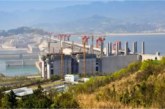[Climate change is assuming serious dimensions and its impact in different sectors is being felt throughout the globe. While describing the magnitude of the problem of climate change, the author dwells on the dangerous implications inherent in the adverse impact of climate change. Ed.]
The rapid pace with which global climate is undergoing change has serious implications of immense magnitude for the future of entire humanity. Adverse impact of climate change is neither an issue of individual concern nor for the concern of a single country. It concerns each and everyone and the entire humanity. Undoubtedly, the environmental implications of climate change have been brought now firmly on the political and public agenda. The security implications arising from climate change have not received adequate attention. The possibility of increased conflict due to resources scarcity and migration always looms large.
A recently published study has warned that global warming may create ‘dead zones’ in the ocean that would be bereft of fish and seafood and endure up to two millennia. At the heart of the study model are two well-used scenarios which use atmospheric levels of carbon dioxide (CO2), the main greenhouse gas, as an indicator of rise in temperature. Under the worst scenario, CO2 concentrations would rise to 1,168 parts per million (ppm) by 2100, or about triple today’s level. Under the more optimistic model, CO2 would reach 549 ppm by 2100, or roughly 50 percent more than today.
Viewed in a broad spectrum, either scenario spells bad news. Under the worst Under the worst scenario, warmer seas and a slowdown of ocean circulation would lower marine oxygen levels, creating ‘dead zones’ that could not support fish, shellfish and other higher forms of marine life — and may not revive for 1,500 to 2,000 years.1
Even under the less gloomy scenario, there would still be significant, long-term expansion of oxygen-starved zones. Marine ‘dead zones’ already exist today, in shallow areas next to the coast, where runoff from agricultural fertilizer causes an explosion in oxygen-gobbling algae. Wide oxygen depletion of the ocean, though, poses a far greater threat, touching at the heart of biodiversity, the paper warns. Around 250 million years ago, a chemical change of the seas led to a massive wipe out of marine species.
While calling for deep cuts in the global carbon emissions to break a trend capable of wrecking the marine ecosystem and depriving future generations of the harvest of the seas, the report lays emphasis on the need for reducing fossil-fuel emissions over the next few generations to limit ongoing ocean oxygen depletion and acidification and their long-term adverse effects.
Another latest alarming development due to climate change is the ongoing process of collapse of the Wilkins Ice Shelf in the Antarctic region. This is a flat-topped shelf having an area of thousands of square kilometers, jutting 20 meters out of the sea off the Antarctic Peninsula. But it is held together only by an ever-thinning 40-km strip of ice that has eroded to an hour-glass shape just 500 meters wide at its narrowest. In 1950, the strip was almost 100 km wide.
The Wilkins Ice Shelf once encompassed an area of 16,000 sq km. It has lost a third of its area but is still about the size of Jamaica or the U.S. state of Connecticut. Once the strip breaks up, the sea is likely to sweep away much of the remaining ice. Icebergs of the shape and size of shopping malls already dot the sea around the shelf as it disintegrates.
During the past five decades, nine other shelves have receded or collapsed around the Antarctic peninsula, often abruptly like the Larsen A in 1995 or the Larsen B in 2002.2 The trend is widely blamed on climate change caused by heat-trapping gases from burning fossil fuels.
In total, about 25,000 sq km of ice shelves have been lost, changing maps of Antarctica. Ocean sediments indicate that some shelves had been in place for at least 10,000 years. Loss of ice shelves does not raise sea levels significantly because the ice is floating and already mostly submerged by the ocean. But the big worry is that their loss will allow ice sheets on land to move faster, adding extra water to the seas. And these are serious developments in the realm of climate change implying threat to security as well.
It is a happy augury that security implications of climate change, which thus far had received little attention of the global community, have started becoming focal point of attention. In April 2007, the UN Security Council held a meeting to consider the security implications emanating from climate change. In his augural address, UN Secretary General Ban Ki-moon spoke of scarce resources, fragile ecosystems and severe strains placed on the coping mechanisms of groups and individuals, potentially leading to “a breakdown of established codes of conduct, and even outright conflict.”3
Emerging patterns of decline in water supplies for drinking and irrigation, a decline in agricultural productivity as a result of changes in rainfall, temperature and pest patterns, and large economic and human losses attributable to extreme weather events entail the potential of take their toll on the global system as a whole.
Many international experts as well as some Western governments have expressed apprehensions that such fragile climate conditions are prone to create an unstable world that could further spur terrorist activity. Apart from this, the possibility of potential rise in conflict in the most environmentally and politically vulnerable countries cannot be ruled out. It is noteworthy that 61 countries have been identifies by International Alert, a peace-building NGO, as being at risk from the ‘double-headed’ risk of climate change and conflict.4
Viewed in a broad perspective, climate change can lead to potential rise in three types of conflict – political violence, ethnic or inter-communal violence and interstate warfare. It is worth mentioning here that climate change seldom triggers conflict directly. The environmental degradation as a consequence of climate change entails the potential of becoming more prominent factor leading to conflict. Environmental changes combined with existing divisions, within a society, on ethnic, nationalist, linguistic or religious grounds, entail the potential of turning into a conflict.
Ecoterrorism, as a sub-strand of terrorism, is the possible area of conflict as a sequel of climate change. Ecoterrorism is defined as “the use or threatened use of violence of a criminal nature against innocent victims or property by an environmentally-oriented, sub-national group for environmental-political reasons.”5 In 2005, the United States had identified ecoterrorism as one of the top domestic terror threats.6
Broadly speaking, under the existing conditions, ecoterrorism is not regarded as a serious threat to security by many countries except the United States. Though one should not rule out augmentation in the frequency and intensity of ‘ecoterrorist’ protests, but is it is not likely that there would be spurt in terror activity because of climate change. However, the links between climate change and terrorism are fragile.
On the other hand, inter-state warfare over sharing of resources can be a product of climate change. It is noteworthy that natural resources are not evenly distributed and they defy internal or external boundaries as well. As such resource-based conflict can occur between states as well as within states. Over 60 per cent of proven oil and gas reserves are located in the Middle East and apart from the developed countries, new burgeoning economies like India, China, are heavily dependent on Middle east oil for their respective energy requirements.7 Dependence on Middle East oil by a large number of countries calls for uninterrupted supplies of oil and any disruption can lead to exacerbation of tension and thereby threatening regional security.
Apart from oil and natural gas, ‘water wars’ are set to increase in the wake of increasing pressure on water supplies as a sequel to decline in water levels and burgeoning growth in populations. The potential for conflict over water is huge, with over 200 river basins touching multiple nations.8 Israel, the Palestinian Territories and Jordan all rely on the River Jordan for their water supply, but it is largely controlled by Israel. Palestinian access to the water is severely restricted and has been cut by Israel in times of scarcity. In this already volatile region any significant change in water supply could lead to renewed tension and conflict.
Water-prone conflicts are present in Central Asia, South Asia, Africa and some other parts of the globe. Sharing a water source does not always lead to conflict however; water access between two countries can cause conflict. In Latin America, interdependence among states who share the Lempa Basin has encouraged the development of regional mechanisms to manage supplies.9
Taking the environment risk seriously can lead to successful resolution and prevention of resource-based conflict to some extent. It also affords an opportunity to explore the ways that resources can bring groups and communities together rather than divide them.
There is an urgent need to look at tackling the root causes of climate change and conflict, instead of responding to the symptoms. Equal emphasis should also be placed on reducing reliance on fossil fuels. While reduce competition over resources, there is a need to address the growing socio-economic divisions which are set to fuel environmental conflicts.
Notes
- “Global Warming Effects to Last 1,000 Years”, Agence France Presse (AFP), 27 January 2009.
- Alister Doyle, “Antarctic Ice Shelf Set to Collapse Due to Warming”, Reuters, 23 January 2009.
- SC/9000, 5663rdMeeting (AM & PM), available at http://www.un.org/News/Press/2007/sc9000.doc.htm .
- Dan Smith, the Double-Headed risk of Climate Change and Armed Conflict, International Alert, March 2007, available at http://www.international-alert.org/press/article.php?id=128 .
- “The threat of Eco-Terrorism”, testimony of James F. Jarboe, Domestic terrorism Section Chief, Counterterrorism Division, Federal Bureau of Investigation, before the House Resources Committee, Subcommittee on Forests and Forest Health, 12 February 2002, available at http://www.fbi.gov/congress/congress02/jarboe021202.htm .
- Statement of John Lewis, Deputy Assistant Director, Federal Bureau of Investigation, 18 May 2005, available at http://epw.senate.gov/hearing_statements.cfm?id=237817 .
- Chris Abbott, Paul Rogers and John Sloboda, Beyond Terror: The Truth About the real Threat to Our World, Rider: 2007, p. 34.
- For details see, Peter Shwartz and Doug Randall, An Abrupt Climate Change Scenario and Its Implication for United States National Security, New York: Global Business Network, 2003.
- International Crisis Group, “Climate Change and Conflict”, July 2007, available at http://www.crisisgroup.org/home/index.cfm?id=4932.
Source: Third Concept/February 2009/Vol.22/No. 264/P.no.7/


